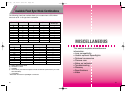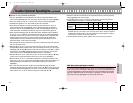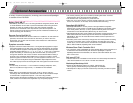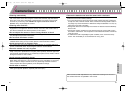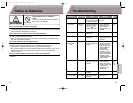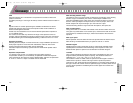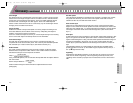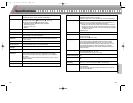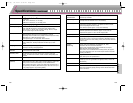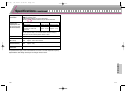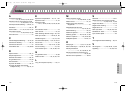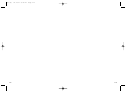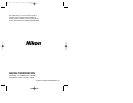
105104
MISCELLANEOUS
Focal length
The distance from the principal point to the focal point. In 35mm-format cameras,
lenses with a focal length of approx. 50mm are called normal or standard lenses.
Lenses with a focal length less than approx. 35mm are called wideangle lenses,
and lenses with a focal length more than approx. 85mm are called telephoto
lenses. Lenses which allow the user to continuously vary the focal length without
changing focus are called zoom lenses.
Focus Tracking
Enables the camera to analyse the speed of a moving subject according to the
focus data detected, and to obtain correct focus by anticipating the subject’s
position—at the exact moment of exposure.
Lock-On™ Autofocus keeps focus firmly on a main subject during Focus Tracking
even if some other object momentarily blocks it in the viewfinder.
Front-Curtain Sync
The flash fires an instant after the front curtain of a focal plane shutter has
completed its travel across the film plane. This is the way the F65/F65D operates
with the flash sync mode at Normal Sync. (See “Rear-Curtain Sync”.)
Guide number
The guide number indicates the power of a flash in relation to ISO film speed.
Guide numbers are quoted in either meters or feet. Guide numbers are used to
calculate the f/stop for correct exposure as follows:
guide number
f/stop = ———————————
flash-to-subject distance
Using a selected aperture, we can calculate the required flash-to-subject distance
with the formula:
guide number
flash-to-subject distance = ———————
f/stop
Useful for determining the maximum flash-to-subject distance for flash
photography.
ISO film speed
The international standard for representing film sensitivity. The higher the number,
the greater the sensitivity, and vice versa. A film speed of ISO 200 is twice as
sensitive as ISO 100, and half that of ISO 400 film.
Rear-Curtain Sync
Flash fires an instant before the second (rear) curtain of the focal plane shutter
begins to move. When slow shutter speeds are used, this feature can create a blur
effect from the ambient light, i.e., flowing-light patterns following a moving subject
with subject movement frozen at the end of the light flow. (See “Front-Curtain
Sync”.)
Slow Sync
A flash technique for using the flash at a slow shutter speed. Flash shooting in dim
light or at night at a fast shutter speed often results in a flash-illuminated subject
against a dark background. Using a slower shutter speed with the flash brings out
the background details in the picture. Use of a slow shutter speed with Rear-
Curtain Sync is particularly effective for illustrating the movement of a stream of
light.
The F65/F65D’s Slow Sync mode extends the automatically controlled shutter
speed range down to 30 sec. (in Auto-Multi Program, Aperture-Priority Auto) or 1
sec. (in h Night Scene mode).
Vignetting
Progressively diminished illumination on the film from the centre to the corners.
There are two kinds of vignetting—natural vignetting caused by the lens, and
vignetting that is caused by improper use of accessories such as a lens hood or
filter.
Glossary—continued
F65 (E) 02.12.27 5:43 PM Page 104



